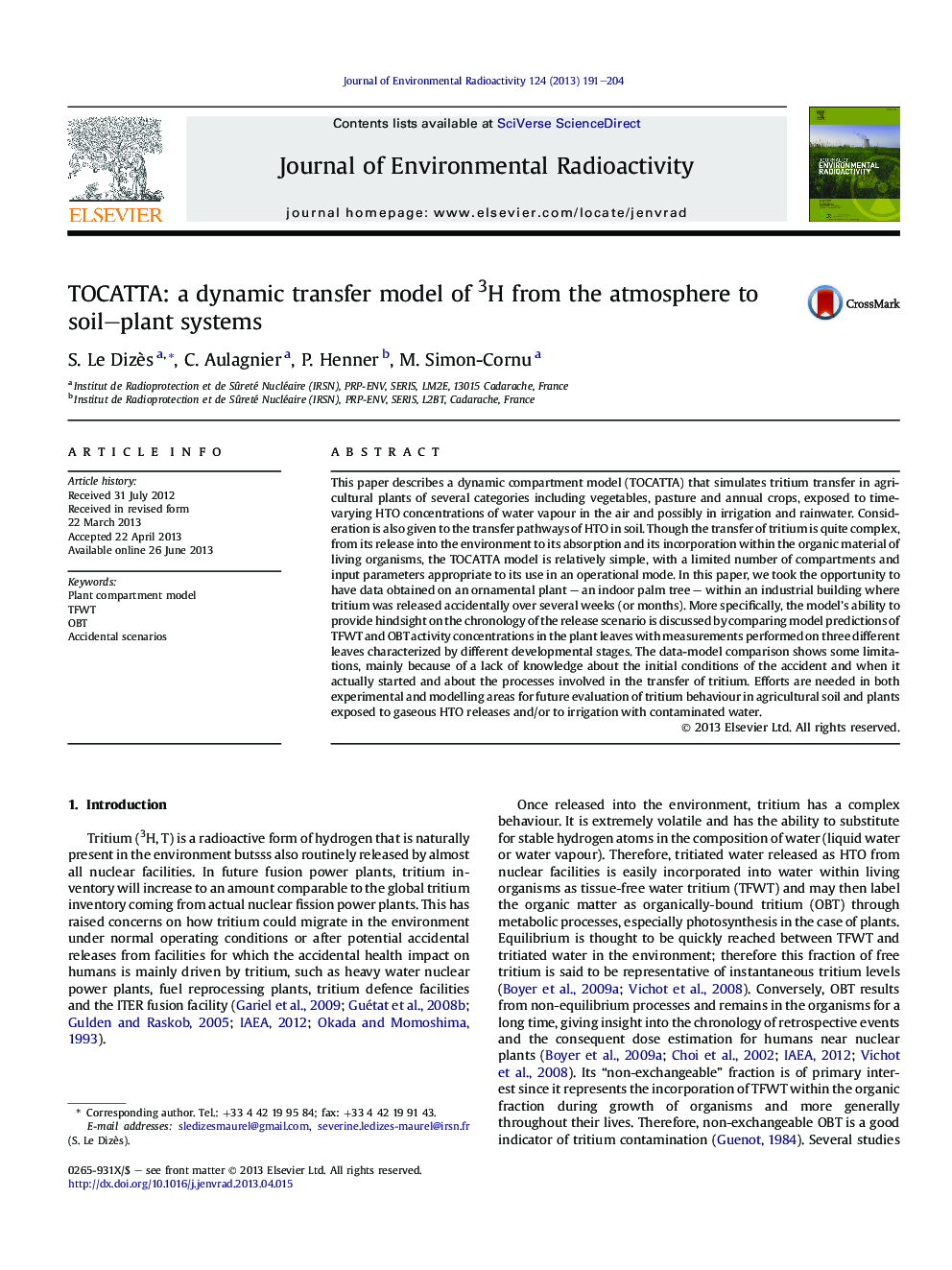| کد مقاله | کد نشریه | سال انتشار | مقاله انگلیسی | نسخه تمام متن |
|---|---|---|---|---|
| 1738190 | 1521609 | 2013 | 14 صفحه PDF | دانلود رایگان |

• We modelled 3H transfer from the atmosphere to soil-plant systems.
• Model-data comparison provided hindsight on the chronology of a real case scenario.
• Efforts are needed in experimental and modelling areas to handle discrete 3H releases.
This paper describes a dynamic compartment model (TOCATTA) that simulates tritium transfer in agricultural plants of several categories including vegetables, pasture and annual crops, exposed to time-varying HTO concentrations of water vapour in the air and possibly in irrigation and rainwater. Consideration is also given to the transfer pathways of HTO in soil. Though the transfer of tritium is quite complex, from its release into the environment to its absorption and its incorporation within the organic material of living organisms, the TOCATTA model is relatively simple, with a limited number of compartments and input parameters appropriate to its use in an operational mode. In this paper, we took the opportunity to have data obtained on an ornamental plant – an indoor palm tree – within an industrial building where tritium was released accidentally over several weeks (or months). More specifically, the model's ability to provide hindsight on the chronology of the release scenario is discussed by comparing model predictions of TFWT and OBT activity concentrations in the plant leaves with measurements performed on three different leaves characterized by different developmental stages. The data-model comparison shows some limitations, mainly because of a lack of knowledge about the initial conditions of the accident and when it actually started and about the processes involved in the transfer of tritium. Efforts are needed in both experimental and modelling areas for future evaluation of tritium behaviour in agricultural soil and plants exposed to gaseous HTO releases and/or to irrigation with contaminated water.
Journal: Journal of Environmental Radioactivity - Volume 124, October 2013, Pages 191–204